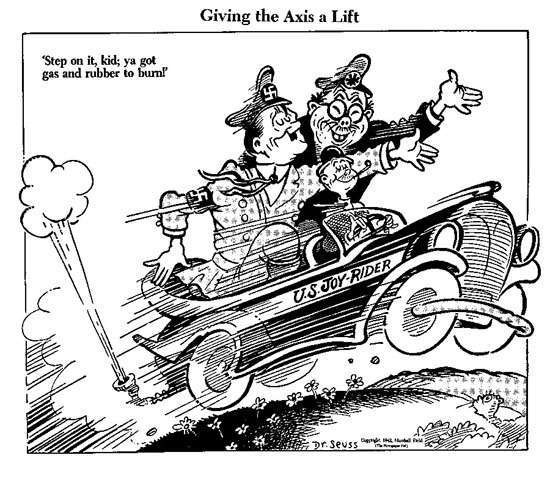Home Front Friday: The “Victory Speed” Limit
Home Front Friday is a regular series that highlights the can do spirit on the Home Front during World War II and illustrates how that spirit is still alive today!
Recently, there has been a lot of talk about oil, conserving fuel, and saving the planet in the news. People are beginning to buy more energy efficient cars, not only because they want to save fossil fuels, but also because it is much less expensive to conserve gasoline. Back during WWII, people conserved gasoline, but for different reasons.
Gasoline was necessary for our military to function properly during the War, so in May of 1942, 17 States began rationing gasoline in order to help the war effort. In December of 1942, President Roosevelt ordered that gasoline rationing be set in all 50 states. Gasoline rationing during WWII wasn’t all about gasoline, though. Rubber was perhaps the hottest commodity at the time, and the rationale behind gasoline rationing was to prevent Americans from needing more rubber tires—the less they drove, the less likely they would need new tires!
Beginning in May of 1942 and ending in August of 1945, a nationwide speed limit of 35 miles per hour was instated. The “Victory Speed” limit was instated in order to reduce gasoline and rubber consumption. The slower people drove, the less gas and rubber they would need. This nationwide speed limit was called “Victory Speed” in order to make Americans more accepting of a lower speed limit, as this speed limit was instated everywhere from big city streets to rural highways.

Dr. Seuss Cartoon from 1942.
In the cartoon (1942), Theodor Geisel depicts an American man driving carelessly and quickly, with a happy Hitler and Tojo in the back. The cartoon is critical of those who drive like this man. It implies that those who drive quickly have “gas and rubber to burn,” as if they were directly taking away from the American military’s supply and damaging the American war effort. This, in turn, would make the Germans and Japanese happy, as it gives them an advantage over the Americans.
Posted by Catherine Perrone, Education Intern and Lauren Handley, Assistant Director of Education for Public Programs at The National WWII Museum.
- Posted :
- Post Category :
- Tags : Tags: Get in the Scrap!
- Follow responses to this entry through the RSS 2.0 feed. You can skip to the end and leave a response. Pinging is currently not allowed.




Leave a Reply